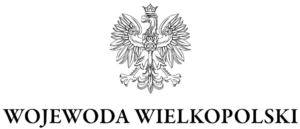01.09.2020 – Cultural differences: long-term orientation
Geert Hofstede, a Dutch sociologist, apart from cultural differences in the dimensions such as:
- power distance
- individualism – collectivism,
- masculinity – femininity,
- uncertainty avoidance
also distinguished the differences between societies in the dimensions of
- long-term orientation – short-term orientation.
Every society retains a link with the past while planning current and future challenges. What differentiates society is the way it looks to the future. Societies characterised by long-term orientation are usually very practical, investing in modern technologies, preparing for the future. Long-term orientation is also linked to strategic thinking and features that bring benefits in the future, such as persistence and economy. Long-term orientation is focused on the values of future rewards – in such societies, perseverance and the ability to adapt to new situations are valued.
Societies characterised by short-term orientation that focus more on the past and present and consider them more important than the future are the opposite. These societies are more rooted in tradition. In such countries, tradition, the current social hierarchy and the fulfilment of social obligations are valued. Meeting current needs is more important than achieving satisfactory results in the future.
People coming from cultures with long-term orientation will more often set targets for the following years. In short-term cultures the future and the present are based on the past and what has not been done today can be done tomorrow.

The table below shows the characteristics of societies with long-term and short-term orientation.
| Long-term orientation | Short-term orientation |
| foresightedness and saving | Strong social pressure on consumption |
| Persistence and systematic efforts to achieve results gradually | Efforts should bring results quickly |
| Sense of shame | Taking care of saving face |
| In business, future profits are important | In business, the profits to be achieved in the near future are important |
| High rate of savings, large investment funds | Low savings rate, lack of money for investments |
Long-term orientation index is given on a scale from 1 to 100. The higher the value, the more long-term oriented society is.

Countries with the highest rates include Taiwan (87), Japan (88), China (87), Ukraine (86), Germany (83), Hong Kong (61). The countries with the lowest index are e.g. South America, such as Venezuela (16), Uruguay (26), as well as the United States (26) and Canada (36).
Poland has a low rating – 38, in this dimension, which classifies her as a short-term oriented society and indicates respect for tradition, a relatively low tendency to save for the future and a focus on achieving quick results.
Poland with the index off 32 is rather a country with short-term orientation.
Bibliography for a series of articles on cultural differences:
„Cudzoziemcy w Polsce. Podręcznik dla osób pracujących z imigrantami”, red. M. Budyta-Budzyńska, Caritas Polska, Warszawa 2020
Skrypt na szkolenie „Praca z klientem cudzoziemskim”, A. Kosowicz, Caritas Polska, Warszawa 2020
„Cudzoziemcy w Polsce. Podręcznik dla osób pracujących z imigrantami”, red. M. Nowicka, Warszawa, Caritas Polska, Warszawa 2020
„Międzykulturowość w szkole, Poradnik dla nauczycieli i specjalistów”, Red. Kinga Białek, Ośrodek Rozwoju Edukacji, Warszawa 2015
„Kultury i organizacje”, G. Hofstede, G. J Hofstede, M. Minkov, Polskie Wydawnictwo Ekonomiczne, Warszawa 2011
Encyklopedia Zarządzania: https://mfiles.pl
https://mfiles.pl/pl/index.php/R%C3%B3%C5%BCnice_kulturowe
https://mfiles.pl/pl/index.php/Badanie_Geerta_Hofstede
https://www.helixpoland.com.pl/roznice-kulturowe-wg-geerta-hofstede/




